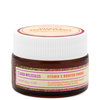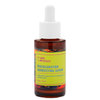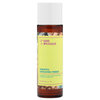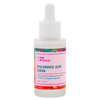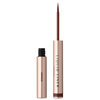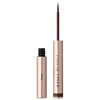
It's been quite a summer, and you've had your fun in the sun. Even though you used SPF, you may be starting to see little spots on your skin. Some are common moles, but others can become precursors to melanoma (the most serious form of skin cancer). Fortunately, melanomas are easily found with warning. "Eighty percent of melanoma moles are actually found by patients, not doctors," says New York City-based dermatologist Macrene Alexiades-Armenakas, M.D., Ph.D. "When patients are darker after tanning, they tend to notice these spots more." Melanoma moles are triggered by intense sun exposure to both UVA and UVB rays, but heredity is still the most important factor. "One particular gene mutation, cdnk2a, causes familial mole syndrome, which increases melanoma risk by 15 to 19 times," says Dr. Alexiades.
Luckily, melanoma is almost 100% curable in its early stage, and you can help prevent it despite your genetic makeup. Protect yourself from the sun and stay indoors during peak hours (from 10 a.m. to 4 p.m.). Dr. Alexiades recommends wearing at least an SPF 30 whenever you're outdoors.
Moles are common on the legs for women and on the back for men. If you find a suspicious mole on your body, use the chart below to perform an initial self-diagnosis, then see your dermatologist.
A. ASYMMETRY
If a mole is asymmetrical (meaning if you draw an imaginary line through the middle, the two halves don't match), it is a warning sign for melanoma.
B. BORDER
An unevenly bordered or scalloped mole can be an indication of early melanoma.
C. COLOR
Variation in color isn't healthy. Benign moles are often a single shade of brown.
D. DIAMETER
Melanomas are usually larger in diameter (more than a quarter-inch wide) than small, benign moles.
E. EVOLVING
If you see your mole change in shape or texture over time, check in with your doctor.


Macrene Alexiades-Armenakas, M.D., Ph.D., received her three degrees from Harvard University: a B.A. from Harvard University, where she was elected to Phi Beta Kappa and awarded the Fay Prize, the highest undergraduate honor; an M.D. from Harvard Medical School, and a Ph.D. in Genetics from Harvard University.
Her practice and academic work are focused on topical dermatologic anti-cancer and anti-aging therapies, laser technology, and skin rejuvenation.
You Might Also Like
-

Expert Skin Care Advice
Dermatologist Shares Her DIY Skin Care Recipes
- 1871
-

Expert Skin Care Advice
The pH of Cleansers and What It Means For Your Skin
- 368
-

Expert Skin Care Advice
3 Simple Tips to Keep Your Post-Workout Skin Clear
- 3127
-

Expert Skin Care Advice
Winterize Your Beauty Routine
- 102
-
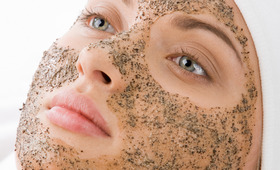
Skincare
How Often Should You Scrub Your Face?
- 247
-

Expert Skin Care Advice
4 Ingredients That Can Make You Break Out!
- 159
-

Expert Skin Care Advice
Ask Dr. Brandt a Question!
- 43
-

Top 3
Fight Keratosis Pilaris
- 92



 Macrene Alexiades-Armenakas, M.D., Ph.D., received her three degrees from Harvard University: a B.A. from Harvard University, where she was elected to Phi Beta Kappa and awarded the Fay Prize, the highest undergraduate honor; an M.D. from Harvard Medical School, and a Ph.D. in Genetics from Harvard University.
Macrene Alexiades-Armenakas, M.D., Ph.D., received her three degrees from Harvard University: a B.A. from Harvard University, where she was elected to Phi Beta Kappa and awarded the Fay Prize, the highest undergraduate honor; an M.D. from Harvard Medical School, and a Ph.D. in Genetics from Harvard University. 
